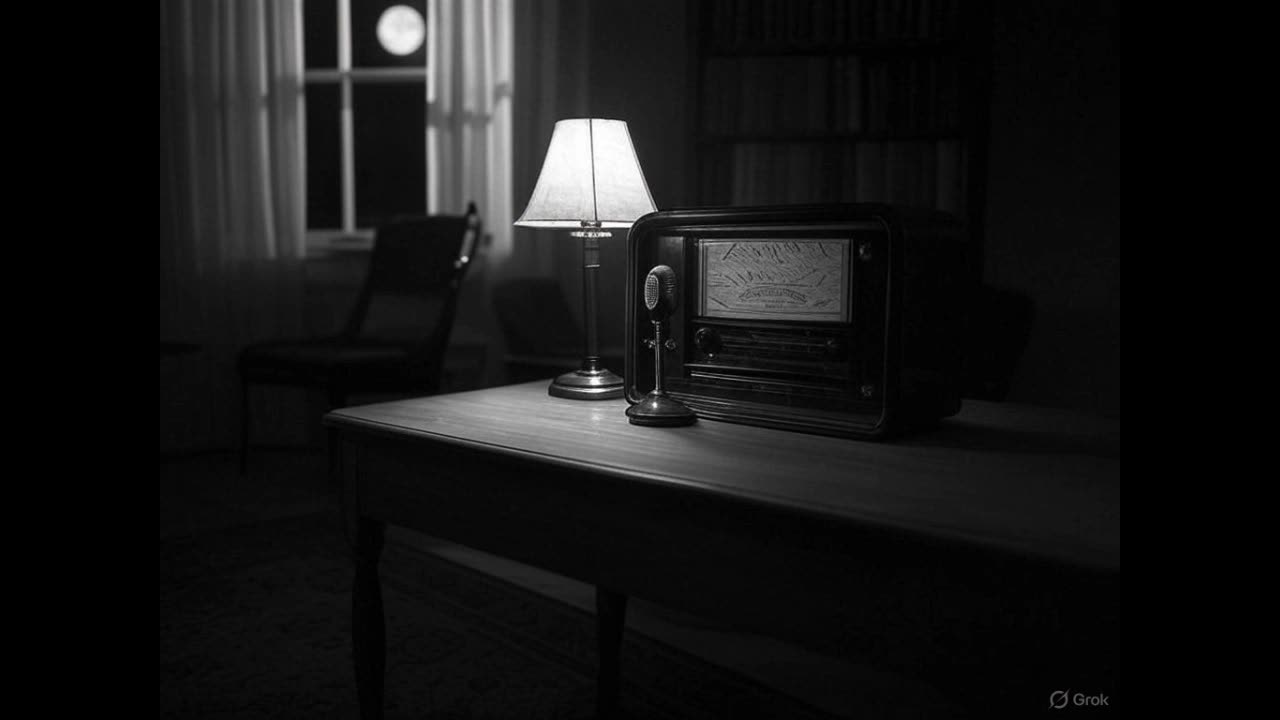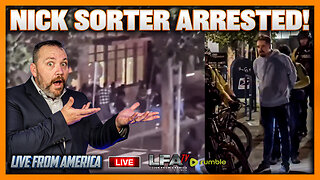Premium Only Content

Lights Out: Valse Triste March 30, 1938
Setting: A contemporary (1938) American or European setting, possibly a grand old house, a theater, or a concert hall, with scenes shifting to surreal or ghostly realms tied to the haunting strains of Sibelius’s Valse Triste. The episode leans heavily on sound effects—creaking doors, ghostly whispers, and the recurring melody of the waltz—to create a chilling atmosphere.
Plot:
Introduction: The episode opens with Arch Oboler’s signature foreboding narration, urging listeners to turn off their lights to heighten the horror. He likely introduces the theme of music as a conduit for the supernatural, referencing Valse Triste (originally composed for a play about death) as a melody that evokes longing, loss, or the uncanny, setting the stage for a tale of obsession or haunting.
The Premise: The story likely centers on a protagonist—perhaps a musician, a dancer, or an ordinary person with a tragic past—who becomes entangled with the haunting power of Valse Triste. The music might be tied to a specific object (e.g., an old phonograph, a music box) or a place (e.g., a decaying mansion) where the melody plays incessantly, summoning memories, ghosts, or supernatural forces. Oboler, known for blending psychological and supernatural horror, might explore the protagonist’s emotional connection to the music—perhaps linked to a lost love, a past sin, or a brush with death.
Escalating Horror: As the episode progresses, the music’s influence grows sinister. The protagonist may hear Valse Triste at unexpected moments, each recurrence accompanied by visions or apparitions—a spectral dancer, a deceased loved one, or a shadowy figure tied to the waltz’s origins. The melody could drive the protagonist toward madness, compel them to reenact a tragic event, or draw them into a ghostly dance from which they cannot escape. Sound effects, such as the waltz’s lilting notes, footsteps in an empty hall, or distant sobs, amplify the eerie mood, with the music itself becoming a character in the horror.
Climax and Ambiguity: The climax likely involves a confrontation with the source of the haunting—perhaps a ghostly presence bound to the music or a revelation about the protagonist’s own guilt or fate. Oboler’s stories often end ambiguously, and “Valse Triste” may conclude with the protagonist consumed by the music’s spell, trapped in an eternal dance, or awakening to a reality altered by the experience. The final strains of Valse Triste fade into Oboler’s closing narration, leaving listeners to question the boundary between life, death, and the supernatural.
Themes: The seductive and destructive power of music, the persistence of memory, and the intersection of beauty and terror. The episode likely reflects Oboler’s fascination with art’s ability to evoke deep emotions, paired with his knack for turning everyday elements (like a waltz) into sources of dread.
Cast and Roles:
Protagonist: Played by an unnamed actor or actress, likely a Chicago-based radio performer, portraying a sensitive or haunted figure—a musician, a widow, or a recluse—whose connection to Valse Triste drives the story. The performance would emphasize emotional vulnerability, escalating to fear or obsession, as seen in Oboler’s character-driven scripts like “The Dream.”
Supporting Characters: An ensemble of unnamed actors, potentially including:
Ghostly Figure: A spectral dancer, lover, or ancestor tied to the music, voiced with an ethereal or menacing tone to evoke the supernatural.
Family/Friends: Characters in the protagonist’s waking life, offering concern or skepticism, possibly distorted in dreamlike sequences to heighten the horror.
Minor Roles: Neighbors, a groundskeeper, or a music expert, providing context or warnings about the music’s curse, voiced by the ensemble doubling up on parts.
Narrator: Likely Arch Oboler himself, delivering the opening and closing remarks in his ominous, intimate tone, framing the story and amplifying its eerie resonance.
Note on Cast: Lights Out rarely credited actors, relying on a tight-knit group of Chicago radio talent. Performances were heightened for horror, with actors often providing ad-libbed reactions (e.g., gasps, screams) to enhance tension, as in episodes like “Chicken Heart.” No specific cast list for “Valse Triste” is documented in sources like otrcat.com or radiogoldindex.com.
Production Details:
Music: Central to the episode, featuring Jean Sibelius’s Valse Triste as a recurring motif, likely performed by a small string ensemble or adapted for organ to suit radio’s budget. The waltz’s melancholic, flowing melody would be woven into the narrative, with variations (e.g., distorted or slowed) to signal supernatural shifts. Additional minimal scoring might frame the opening and closing.
Writer/Director: Arch Oboler, known for his innovative use of sound and psychological depth. “Valse Triste” aligns with his ability to transform familiar elements (like music) into horror, as seen in “The Dark” or “Revolt of the Worms.”
Sound Effects: Critical to the episode, including the waltz’s notes, creaking floors, ghostly whispers, wind, or footsteps in an empty space, creating a dreamlike, haunting atmosphere. Oboler’s sound design, praised in Lights Out histories, would make the music itself a source of terror.
Sponsor: None for this 1938 broadcast, as Lights Out aired late at night (11:30 PM CST) without commercial sponsorship, supported by NBC’s experimental programming.
-
 LIVE
LIVE
The Culture War with Tim Pool
1 hour agoNigeria's Christian Genocide, Media Ignoring Atrocities | The Culture War Podcast
15,939 watching -
 UPCOMING
UPCOMING
Dr Disrespect
47 minutes ago🔴LIVE - DR DISRESPECT - BABY STEPS - THE VERY VERY LAST CHAPTER
1 -
 LIVE
LIVE
The Charlie Kirk Show
34 minutes agoChristians Under Siege + Shame! Shame! + AMA | O'Neill, Ahern | 10.3.2025
4,940 watching -
 LIVE
LIVE
Right Side Broadcasting Network
2 hours agoLIVE: White House Press Secretary Karoline Leavitt Holds a Press Briefing - 10/3/25
1,683 watching -
 1:31:26
1:31:26
Steven Crowder
3 hours agoHegseth Makes the Military Great Again!
140K99 -
 1:13:06
1:13:06
The Rubin Report
1 hour agoPress Gasps When Told Trump’s Brutal Plan for Layoff of Gov’t Workers with Dinesh D'Souza
13.1K10 -
 DVR
DVR
Dr. Eric Berg
4 days agoThe Dr. Berg Show LIVE October 3, 2025
3.98K2 -
 LIVE
LIVE
LFA TV
14 hours agoLIVE & BREAKING NEWS! | FRIDAY 10/3/25
3,728 watching -
 DVR
DVR
Grant Stinchfield
11 hours agoThe War Machine Strikes Again—Elites Push World to the Brink
805 -
 LIVE
LIVE
Trumpet Daily
58 minutes agoTrumpet Daily LIVE | Oct. 3, 2025
344 watching
